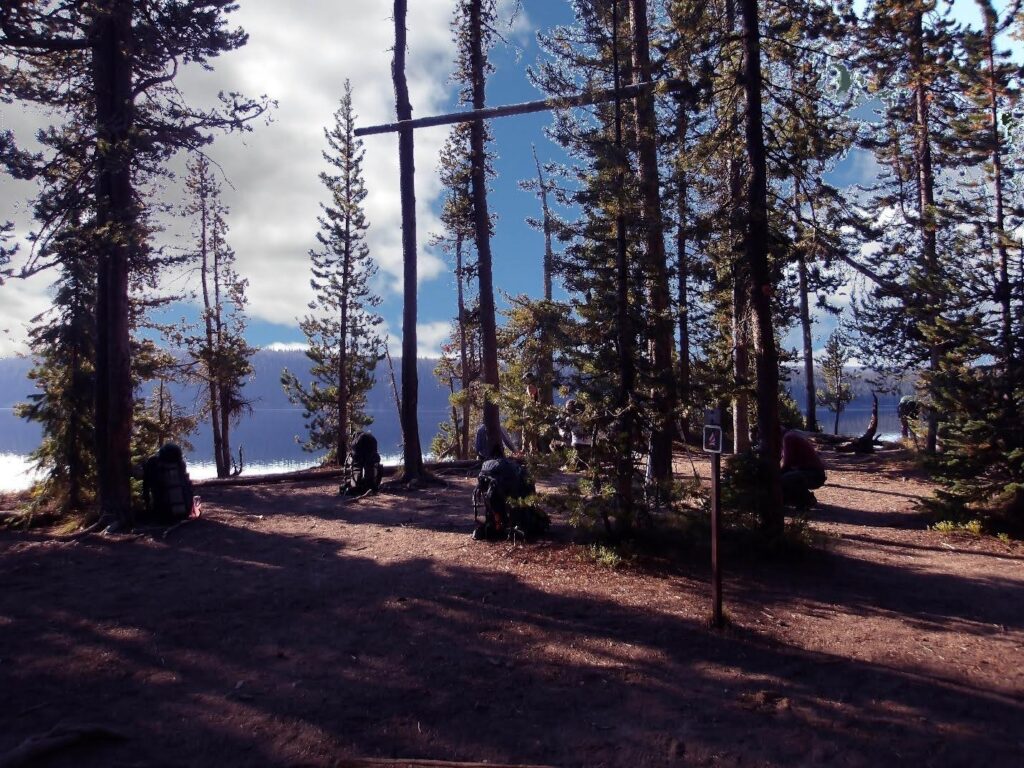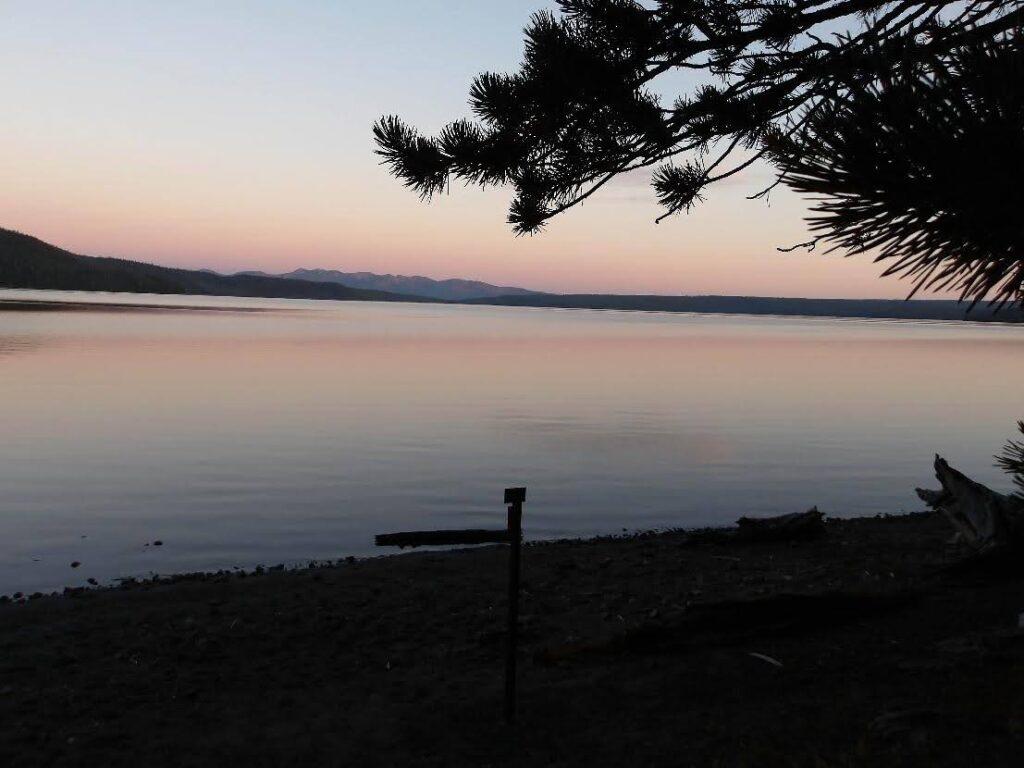I am sitting overlooking Shoshone lake in south Yellowstone National Park. We are in the second of three weeks and on our second backcountry camping trek. The lake has been a respite for swimming and a resource for bird watching. One morning we heard, but didn’t see, a flock of Sandhill Cranes taking off. These birds have made their voices heard throughout our campsites. Conifers frame the vista. I’m contemplating what we have been discussing in our readings and site visits.

I transitioned from architecture to landscape architecture because I wanted to do better in layout and planning of buildings and the spaces between them where humans have the most contact. We are required to write a journal and make observations every day. I am practicing asking what is happening naturally here? In the built environment I am asking, what can be done intentionally? And I begin to see some overlap. Restoration work has intentions, and I am learning that restoration fieldwork relies on ecological understanding to look at natural systems and relationships and how interventions might integrate with or impact these systems.
The built environment encodes human perception, and this becomes a point of contention in ecology for conservation, restoration, and preservation. Human exceptionalism, the belief that human needs and perspectives are central, remains embedded in how people have historically made decisions around nature. In contrast, human exceptionalism shapes conversations in design, about space aesthetics and use.

I came to this program to learn from the site visits and conversations of the people working and directly managing the land. There has been so much information, discussion and hands-on practice of restoration that I am still processing. But this trip has helped me see a new type of relationship between ecology and the built environment and how intention, perception and stewardship intersect in ways I have not thought about before. I realize that this landscape is teaching me about design and ecology.
One Reply to “The Spaces Between – Observing and Learning in Nature by Carol Kegley”
Comments are closed.
I enjoyed reading your blog post, Carol. May you always remain curious enough to observe, humble enough to ask new questions, and always open to new ideas. Best of luck in your new career choice!